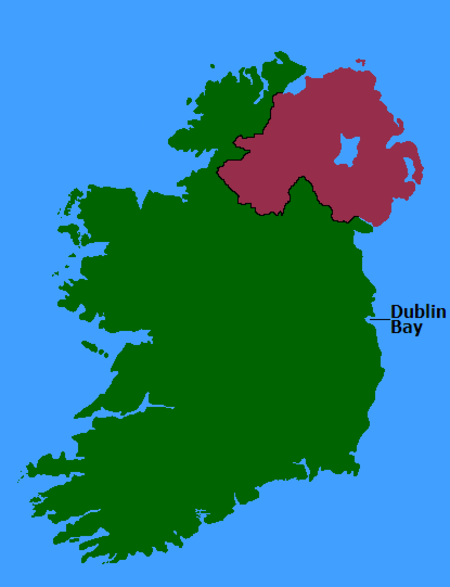Vidyapati
| |||||||||||||||||||||
Read other articles:

This article is about the 1985 film. For the Bliss 66 song, see Titan A.E. § Music. 1985 British filmNot Quite ParadiseFilm posterDirected byLewis GilbertWritten byPaul KemberProduced byLewis GilbertWilliam P. CartlidgeStarringJoanna PacułaSam RobardsKevin McNallyTodd GraffSelina CadellEwan StewartCinematographyTony ImiEdited byAlan StrachanMusic byGian Piero ReverberiRondo VenezianoDistributed byJ. Arthur Rank Film Distributors (UK)Anchor Bay Entertainment (US)Release dates 28 March…

Questa voce sull'argomento ciclisti olandesi è solo un abbozzo. Contribuisci a migliorarla secondo le convenzioni di Wikipedia. Jetse Bol Jetse Bol alla Ronde van Limburg 2015 Nazionalità Paesi Bassi Altezza 184[1] cm Peso 72[1] kg Ciclismo Specialità Strada Squadra Burgos-BH CarrieraSquadre di club 2008-2010 Rabobank Cont.2010 Rabobankstagista2011 Rabobank Cont.2011 Rabobankstagista2012 Rabobank2013 Blanco2013-2014 Belkin2015-2016…

For the 2011 autobiography, see A Heart for Freedom. Political party in Netherlands Heart for Freedom Hart voor VrijheidChairpersonPeter van den NesteFounded17 June 2021Split fromFree and Social Netherlands [nl]IdeologyCOVID-19 skepticismAntivaxColors RedMunicipal council of Kerkrade1 / 29 Websitehartvoorvrijheid.nlPolitics of NetherlandsPolitical partiesElections Heart for Freedom (Dutch: Hart voor Vrijheid, pronounced [ɦɑrt voːr ˈvrɛi.ɦɛi̯t]), former…

British politician For the New Zealand mayor and politician, see Tommy Taylor (New Zealand politician). The Right HonourableThomas Edward TaylorParliamentary Secretary to the TreasuryIn office14 July 1866 – 7 November 1868MonarchVictoriaPrime MinisterThe Earl of Derby Benjamin DisraeliPreceded byHon. Henry BrandSucceeded byHon. Gerard NoelChancellor of the Duchy of LancasterIn office7 November 1868 – 1 December 1868MonarchVictoriaPrime MinisterBenjamin DisraeliPreceded byJo…

Dominican upper chamber during 1844–1854 This article relies excessively on references to primary sources. Please improve this article by adding secondary or tertiary sources. Find sources: Conservative Council – news · newspapers · books · scholar · JSTOR (December 2017) (Learn how and when to remove this message) Conservative Council Consejo ConservadorTypeTypeUpper House of the Congress of the Dominican Republic HistoryFounded1844Disbanded1854Meeting…

Map of Walloon Division and adjacent local government areas, March 1902. Legend: Ipswich Municipality (2), Brassall Division (9), Bundanba Division (10), Rosewood Division (14), Walloon Division (17) The Shire of Walloon is a former local government area in the south-east of Queensland, Australia. Its administrative centre was in the town of Marburg.[1] History On 11 November 1879, the Walloon Division was created as one of 74 divisions within Queensland under the Divisional Boards Act 1…

Varieties of the color cyan Cyan Color coordinatesHex triplet#00FFFFsRGBB (r, g, b)(0, 255, 255)HSV (h, s, v)(180°, 100%, 100%)CIELChuv (L, C, h)(91, 72, 192°)SourceCSS Color Module Level 3B: Normalized to [0–255] (byte) The color cyan, a greenish-blue, has notable tints and shades. It is one of the subtractive primary colors along with magenta, and yellow. The first recorded use of cyan blue as a color name was in 1879 (cyan blue being the name used for cyan in the 1…

Suppression of speech or other information For Wikipedia's policy concerning censorship, see Wikipedia:Wikipedia is not censoredThis article contains weasel words: vague phrasing that often accompanies biased or unverifiable information. Such statements should be clarified or removed. (December 2021) The plaster cast of David at the Victoria and Albert Museum has a detachable plaster fig leaf which is displayed nearby. Legend claims that the fig leaf was created in response to Queen Victoria's s…

巴西昵称Canarinho(Little Canary)A Seleção(The Selection)Verde-Amarela(Green and Yellow)协会巴西足球协会联合会南美足联主教练Marcos Sorato Pipoca助理教练Vander Iacovino队长Vinícius神射手Falcão (299)主场VariousFIFA代码BRAFIFA排名2 [1]最高FIFA排名1 (22 January 1996) 主場球衣 客場 球衣 最大比分勝利 Brazil 76–0 East Timor (Macau, Macau; 13 October 2006) (World Record international score) 最大比分失利 Brazil 1–6 Netherlands (G…

City in Switzerland For other uses, see Lausanne (disambiguation). Municipality in Vaud, SwitzerlandLausanne Losena (Arpitan) MunicipalityFrom top to bottom; left to right: the Olympic Museum, the Cathedral of Lausanne, the Federal courts of Switzerland, aerial view of the city, and the park of Milan. FlagCoat of armsLocation of Lausanne Losena (Arpitan) Lausanne Losena (Arpitan) Show map of SwitzerlandLausanne Losena (Arpitan) Show map of Canton of VaudCoordinates: 46°31.19…

This is a list of parks, historic resources, reserves and recreation areas in the California State Parks system. General location of California's +139 State Parks List of parks Park name Classification County orcounties Size[1] Year established[1] Remarks acres ha Admiral William Standley State Recreation Area State recreation area Mendocino 45 18 1944 Boasts redwoods plus salmon and steelhead fishing on the Eel River.[2] Ahjumawi Lava Springs State Park State park Shasta…

Alcuni dei contenuti riportati potrebbero generare situazioni di pericolo o danni. Le informazioni hanno solo fine illustrativo, non esortativo né didattico. L'uso di Wikipedia è a proprio rischio: leggi le avvertenze. Disambiguazione – Se stai cercando altri significati, vedi Polvere da sparo (disambigua). Questa voce o sezione sull'argomento esplosivi non cita le fonti necessarie o quelle presenti sono insufficienti. Commento: Bibliografia di ben scarsa utilità. Puoi migliorare quest…

Peta Teluk Dublik di Pulau Irlandia Teluk Dublin (bahasa Irlandia: Cuan Bhaile Átha Cliath, bahasa Inggris: Dublin Bay) adalah inlet berbentuk C dari Laut Irlandia di pantai timur Republik Irlandia. Teluk ini lebarnya sekitar 10 kilometer di sepanjang pangkalan utara-selatan, dan panjangnya 7 km ke puncaknya di pusat kota Dublin; membentang dari Howth Head di utara ke Dalkey Point di selatan. North Bull Island terletak di bagian barat laut teluk, di mana salah satu dari dua tepian panta…

هذه المقالة يتيمة إذ تصل إليها مقالات أخرى قليلة جدًا. فضلًا، ساعد بإضافة وصلة إليها في مقالات متعلقة بها. (نوفمبر 2021) أكاديمية أوديسا الوطنية للموسيقى معلومات التأسيس 1913 الموقع الجغرافي إحداثيات 46°28′59″N 30°43′30″E / 46.4831°N 30.7251°E / 46.4831; 30.7251 المكان أوديس�…

هذه المقالة عن القوات البرية الجزائرية. لمعانٍ أخرى، طالع وزارة الدفاع الوطني (الجزائر). القوات البرية الجزائرية شعار القوات البرية الجزائرية الدولة الجزائر التأسيس 1954م فرع من الجيش الوطني الشعبي الجزائري الاسم الأصلي القوات البرية الجزائرية ألقاب الجيش الجز�…

بلدة ماركيت الإحداثيات 46°05′52″N 84°31′16″W / 46.097777777778°N 84.521111111111°W / 46.097777777778; -84.521111111111 [1] تقسيم إداري البلد الولايات المتحدة التقسيم الأعلى مقاطعة ماكيناك خصائص جغرافية المساحة 136.2 ميل مربع ارتفاع 197 متر عدد السكان عدد السكان 611 (1 أبري�…

Location of Somerset County in New Jersey List of the National Register of Historic Places listings in Somerset County, New Jersey Contents: Counties and communities in New Jersey Atlantic – Bergen (Closter, Franklin Lakes, Ridgewood, Saddle River, Wyckoff) – Burlington – Camden – Cape May – Cumberland – Essex – Gloucester – Hudson – Hunterdon – Mercer – Middlesex – Monmouth – Morris – Ocean – Passaic – Salem – Somerset – Sussex – Union – Warren Map all co…

János DrapálNazionalità Ungheria Motociclismo CarrieraCarriera nel MotomondialeEsordio1969 in classe 350 Miglior risultato finale8º Gare vinte4 Podi5 Punti ottenuti135 Giri veloci2 Modifica dati su Wikidata · Manuale János Drapál (Budapest, 3 febbraio 1948 – Piešťany, 11 agosto 1985) è stato un pilota motociclistico ungherese. Indice 1 Carriera 2 Risultati nel motomondiale 2.1 Classe 125 2.2 Classe 250 2.3 Classe 350 2.4 Classe 500 3 Note 4 Altri progetti 5 Collegame…

Sporting event delegationPortugal at the1912 Summer OlympicsIOC codePORNOCOlympic Committee of PortugalWebsitewww.comiteolimpicoportugal.pt (in Portuguese)in StockholmCompetitors6 in 3 sportsFlag bearerFrancisco LázaroOfficials1Medals Gold 0 Silver 0 Bronze 0 Total 0 Summer Olympics appearances (overview)19121920192419281932193619481952195619601964196819721976198019841988199219962000200420082012201620202024 Portugal's first participation in the Summer Olympic Games took place at the 1…

Land warfare branch of the Bangladesh Armed Forces Bangladesh Armyবাংলাদেশ সেনাবাহিনীInsignia of the Bangladesh ArmyFounded26 March 1971(53 years, 3 months)Country BangladeshTypeArmyRoleLand warfareSize160,000 troops[1][2][3][4]13,408 civilians[3][4]Part of Bangladesh Armed ForcesArmy HeadquartersDhaka CantonmentMotto(s)In War, In Peace, We are everywhere for our Nation (সমরে আমর…

